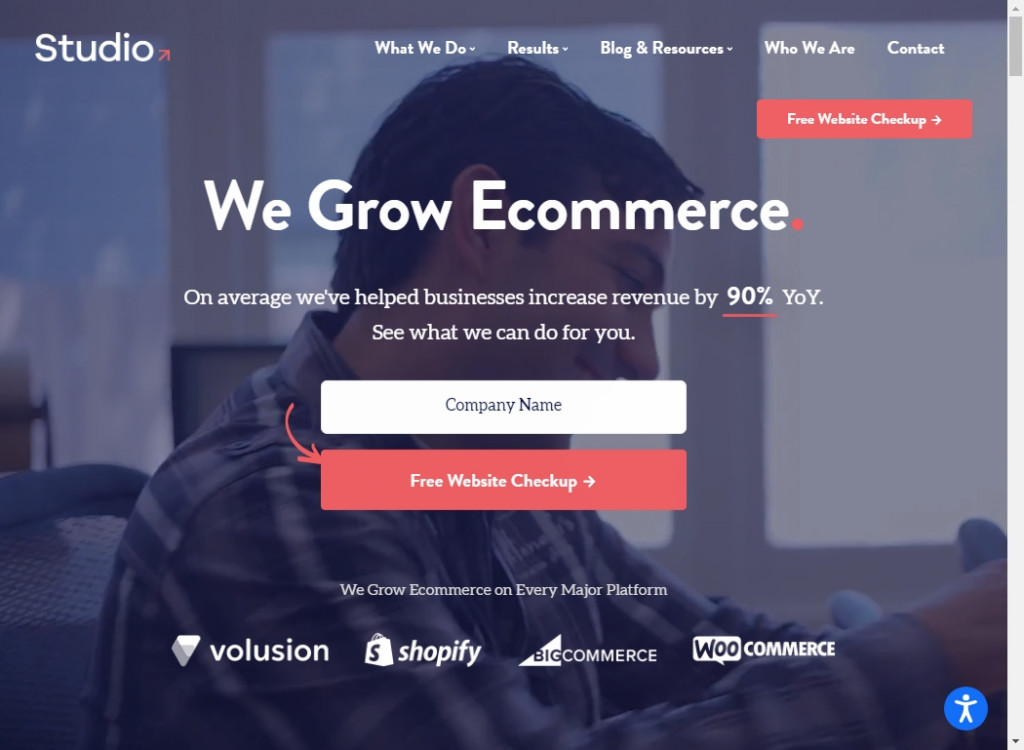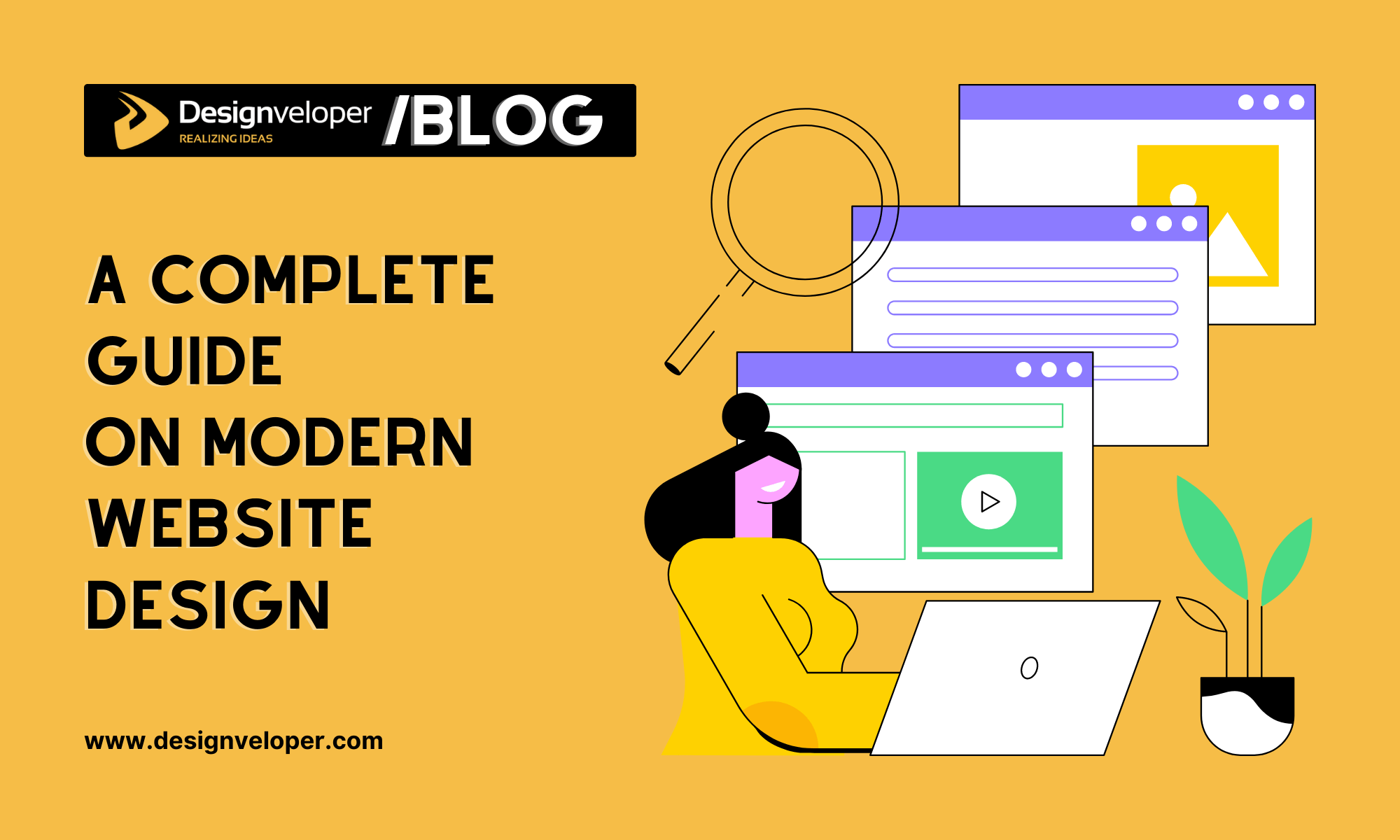The Ultimate Overview to Modern Site Design Trends
In the ever-evolving digital landscape, modern internet site layout fads play an essential duty in shaping user experience and interaction. From the increase of minimalist layout concepts that prioritize simplicity to the influence of bold typography in defining brand identity, each element adds to a cohesive online visibility.
Minimalist Layout Concepts
Minimalist style principles emphasize the concept that much less is more, advocating for simplicity and functionality in visual interaction. This method strips away unnecessary elements, focusing instead on important parts that communicate the intended message successfully. By focusing on quality, minimal layout boosts customer experience, permitting site visitors to browse internet sites effortlessly.
Core tenets of minimalist layout consist of the usage of adequate white space, which develops a feeling of equilibrium and organization. This negative area not just directs the customer's focus to crucial aspects however also fosters a soothing visual ambience. In addition, a restricted color combination is usually utilized, making use of soft shades or monochromatic schemes to maintain visual cohesion and avoid frustrating the customer.
Typography plays an essential duty in minimal design, where clear typefaces are chosen for their simpleness and performance in communicating web content. Inevitably, minimal style concepts cultivate a concentrated environment that motivates customers to involve with the web content, improving the overall efficiency of modern web site design.
Strong Typography Options
Welcoming bold typography options has actually ended up being a defining feature of contemporary website design, as it successfully records interest and communicates strong messaging. Designers are progressively making use of typography not merely as a functional aspect but as a key aesthetic component that enhances the general aesthetic and user experience.

Additionally, the juxtaposition of bold typography with minimalist design concepts enables striking contrasts, improving readability while preserving visual charm. The usage of whitespace around bold text further emphasizes its significance, guaranteeing that the message resonates with the target market.
As electronic landscapes come to be extra affordable, leveraging bold typography allows brands to separate themselves and leave a long lasting perception. The cautious choice of fonts and their application can evoke emotions, establish tone, and drive action, making strong typography a crucial tool in modern web site design. Eventually, it is an effective means to improve storytelling and ensure that key messages are not just seen but additionally felt.
Mobile-first and responsive Style
Responsive and mobile-first style has become a vital principle in modern-day website advancement, reflecting the increasing dependence on mobile devices for accessing on-line web content. As user actions changes in the direction of mobile browsing, designers need to focus on producing experiences that adapt seamlessly throughout numerous display dimensions and resolutions.
A responsive style makes certain that an internet site automatically changes its layout, photos, and capability based on the device being used. This approach enhances user experience by offering constant navigation and readability, regardless of whether the site visitor gets on a tablet, desktop computer, or smartphone computer system. Additionally, mobile-first design supporters for developing web sites at first for smaller sized screens, consequently scaling as much as bigger display screens. This strategy motivates a much more efficient and structured design process, concentrating on essential content and functionality initially.
Carrying out mobile-first and responsive concepts not only caters to customer preferences but additionally straightens with seo (SEARCH ENGINE OPTIMIZATION) practices. Major internet search engine, like Google, prioritize mobile-friendly sites in their rankings, making it necessary for services to embrace these design approaches. In a competitive electronic landscape, welcoming mobile-first and receptive style is not just a choice; it is vital for ensuring ease of more tips here access and go right here engagement with a varied audience.
Engaging Microinteractions
Microinteractions play a pivotal role in improving user interaction and general site experience, especially in the context of receptive and mobile-first design. These subtle design elements give immediate responses to customers, making communications much more user-friendly and enjoyable. Examples consist of switch animations, alert notifies, and packing indicators, which not just guide individuals but also produce a feeling of connection with the interface.
Incorporating engaging microinteractions can substantially boost use by lowering cognitive tons. When users obtain auditory or aesthetic responses upon carrying out actions, such as clicking a switch or submitting a form, they feel much more certain in their selections. This fosters a smoother navigation experience, ultimately enhancing user retention.

As internet site layout fads proceed to evolve, the significance of microinteractions can not be overemphasized. They offer as the subtle yet powerful touchpoints that change common interactions into extraordinary experiences, thereby raising the general performance of modern-day website design.
Sustainable Website Design Practices
Sustainable website design methods are coming to be significantly necessary go to the website as the electronic landscape grows and environmental issues climb. Designers and developers are acknowledging their obligation to create web sites that not just serve customer needs however additionally reduce ecological effect. This method includes several essential methods.
Firstly, maximizing power consumption is paramount. Sites should be made to load quickly and successfully, which reduces web server power use and boosts user experience. Methods such as image compression, lessening HTTP demands, and making use of modern coding techniques add considerably to this goal.
Secondly, picking green holding providers is important - website design. Several holding companies are now powered by eco-friendly energy resources, allowing websites to operate in a much more sustainable way. This choice reflects a commitment to lowering carbon impacts
Furthermore, adopting a minimal design can improve sustainability. Fewer aspects on a page result in much less data transfer, which not only quickens filling times yet likewise conserves resources.
Lastly, promoting electronic availability makes sure that internet sites reach a wider audience without unneeded bloat, straightening user experience with environmental duty. By integrating these lasting methods, web developers can contribute favorably to both individual engagement and the world's well-being.
Conclusion
In recap, contemporary internet site layout patterns highlight the combination of minimalist concepts, bold typography, and responsive layout to enhance customer experience. Embracing these patterns is important for producing impactful digital experiences that resonate with individuals in an increasingly affordable on-line landscape.
In the ever-evolving digital landscape, modern-day web site layout fads play a critical duty in shaping user experience and interaction. By focusing on clearness, minimal style boosts customer experience, permitting visitors to browse internet sites effortlessly.
Eventually, minimal layout concepts cultivate a concentrated environment that urges users to involve with the content, enhancing the overall efficiency of modern internet site design.Microinteractions play a pivotal duty in improving user engagement and general web site experience, specifically in the context of responsive and mobile-first style.In recap, modern web site layout trends highlight the integration of minimal principles, bold typography, and receptive style to improve individual experience.